Conversation VI
Or, the beauty of kelp with jewellery designer, Aunty Beverley Meldrum.

I’m so excited to introduce you to Aunty Beverley Meldrum. She is a proud Nunga woman of the Kokatha/Wirangu people of South Australia. She uses the medium of kelp – drying it and shaping it – to create unique pieces of jewellery.
Earlier this year, I had the pleasure of visiting the Mornington Peninsula Regional Gallery to view Bev’s work and I’m so grateful that she has joined me on the blog so that I can share her art with you.
Bev has overcome enormous challenges in her personal life and now dedicates as much of her time as possible to her creative practice. I hope you’ll enjoy reading about her creative life.

-----------------
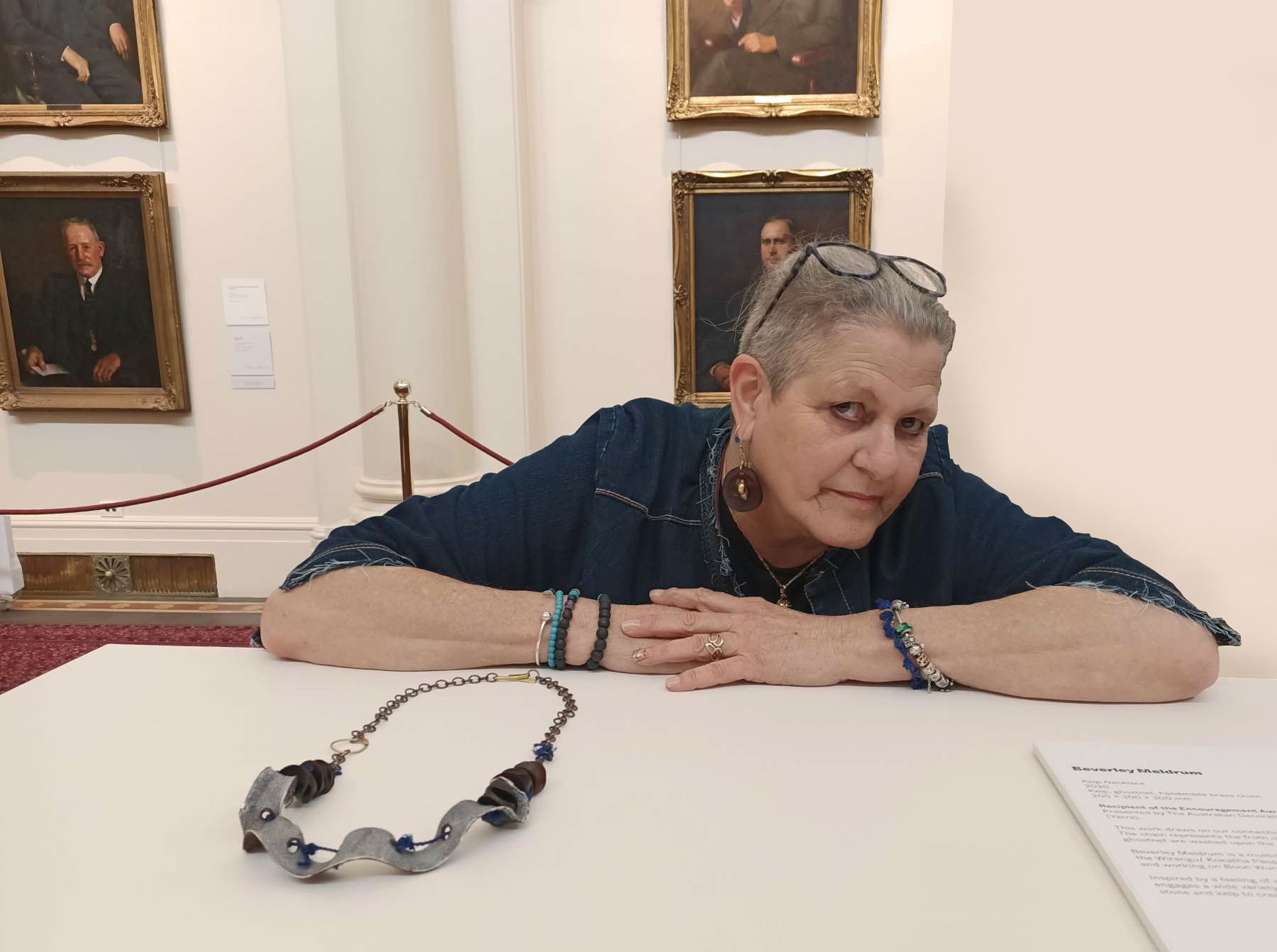
Hi Bev. Thank you for sharing your art with us. Can you please tell us about your relationship with the sea and what it is you love about kelp that has made it the foundation of your artistic practice?
The beach, or the sea, has always been part of my life since my childhood.
I remember smelling the kelp when I was a kid. Dad used to drive an old Ford Pilot, past the shoreline on the way to our shack on top of the sand dunes. You could smell the sea and the shoreline with the built-up seaweed, you know how it builds up on the shoreline? People wind up their windows to avoid that kind of smell, I wind mine down. Even now, in my adult years, I just love the smell of it.
I’ve never lived anywhere more than an hour away from the sea. So usually, I’m always on a shoreline somewhere, wherever I live. The sea has a lot of healing qualities for me. It’s therapeutic. The salt of the sea, and the texture of the water on my body, it heals me.
So yeah, there are really good memories associated with kelp and the sea from as far back as I can remember.
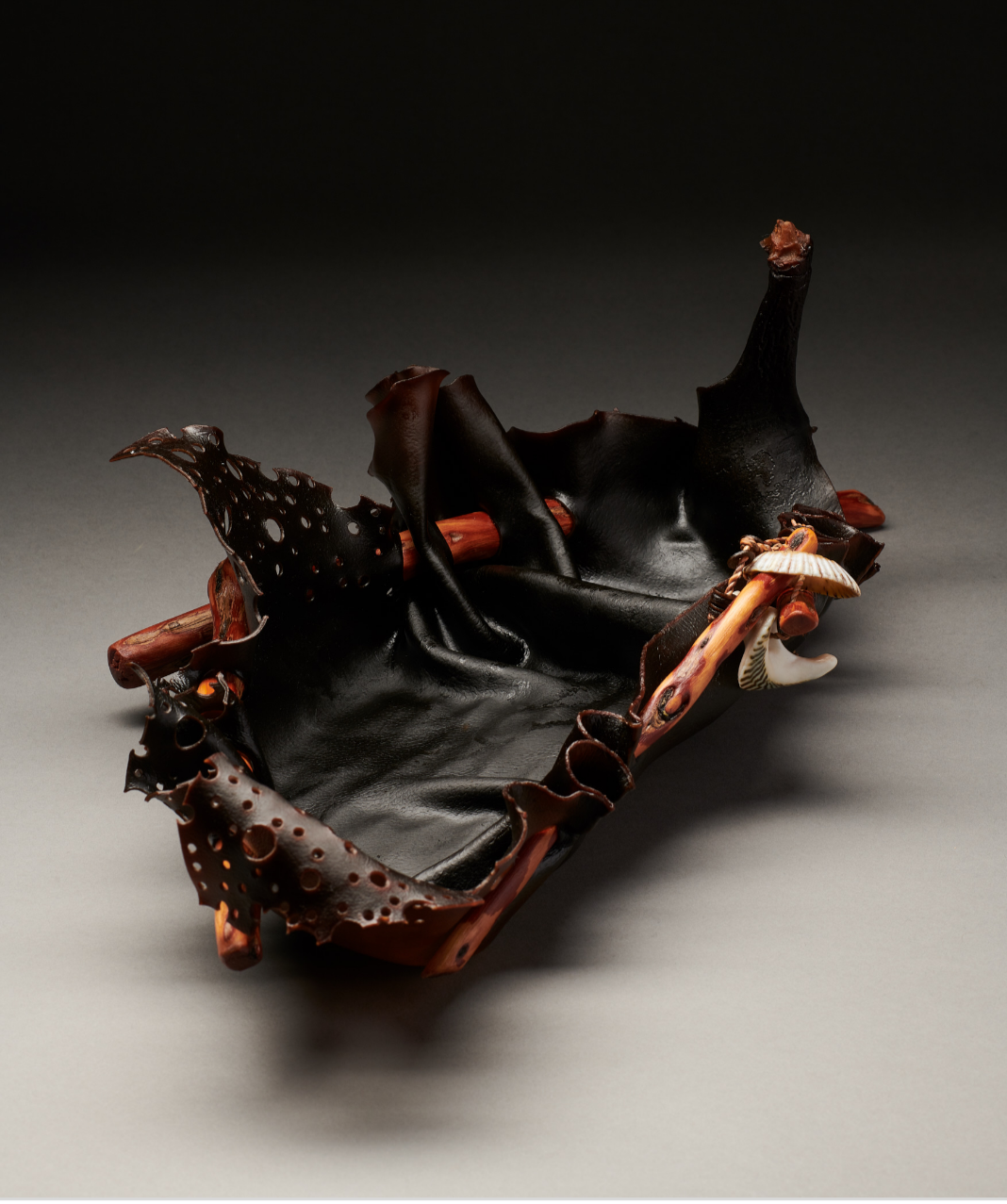
Can you please tell us a bit about Baluk Arts and how Aunty Nannette inspired your practice?
Baluk Arts is an urban Aboriginal community arts centre based in Mount Eliza – they used to be in Mornington but they’re in Mount Eliza now.
A friend of mine took me to Baluk – she knew I had some challenges at home and she thought that art would do me good. I hadn’t done any art for such a long time, maybe 15 years or so. In 2017 or 2018, Aunty Nannette Shaw from Tasmania came to do a workshop – everyone was talking about her work, she uses kelp to make art, such as water vessels. At the time, I was working every weekend in aged care, so I couldn’t get to Aunty Nanette’s workshop myself. But there was some kelp left in the freezer when she’d gone and I got some out, had a bit of a play with it and I’ve never looked back. About six months later, I met Aunty Nanette and now we’re in contact quite regularly.
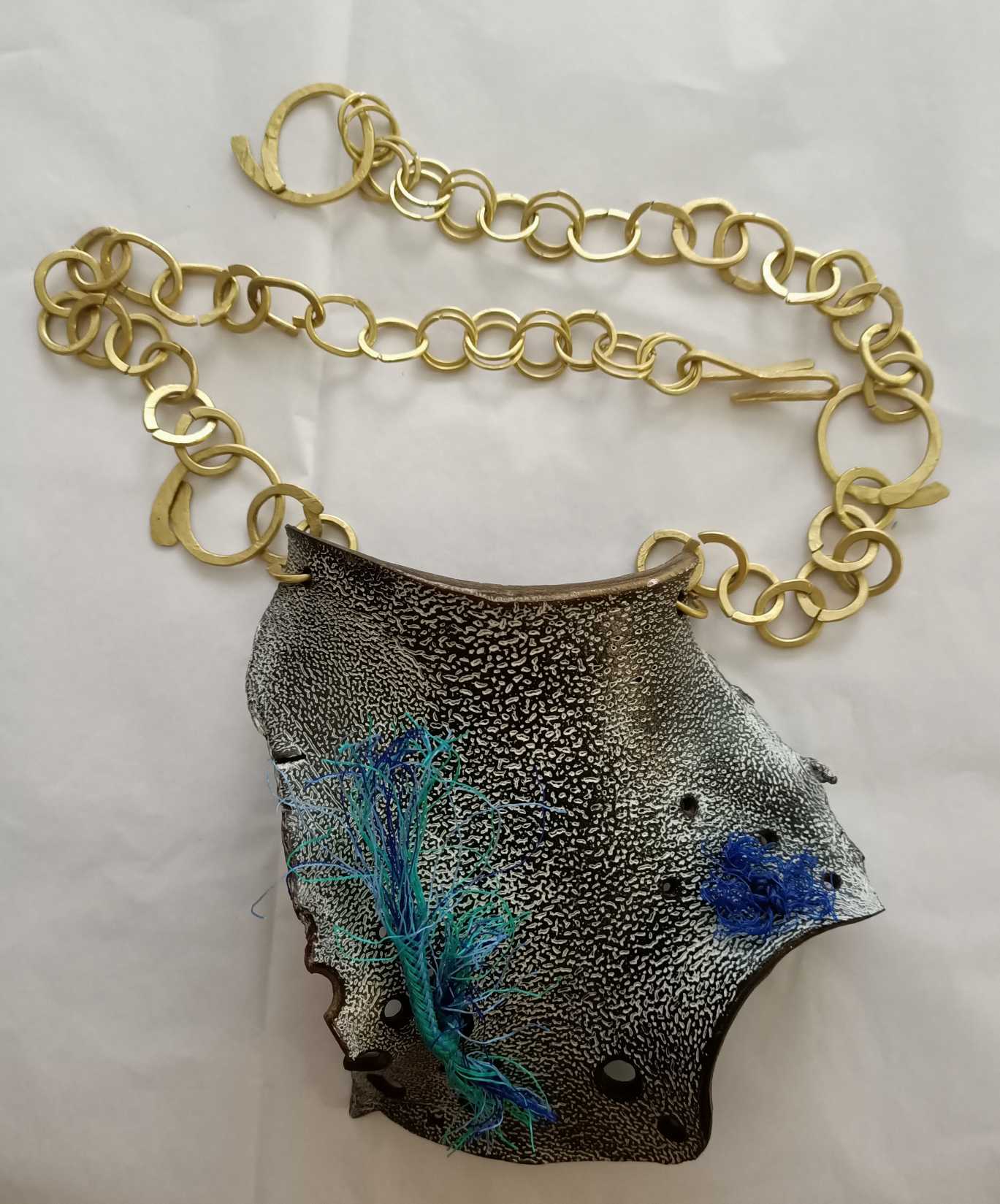
How did your experimentation with the kelp then evolve into jewellery design?
Well, I’ve done lots of things with it. I made little discs about the size of the opening of a cup, a coffee cup, and I carved into them, and you know you can paint the kelp, you can carve into it like leather, so I made these discs, and I added onto that with woven material so that it would make a vessel. So I made a few of those, just little dishes I suppose.
I also incorporate the wood of the tea tree into my work because it’s got nice natural grooves and markings and it’s beautiful. And the colour. I love the colour. Before I start working with the wood, I heat it up in my oven to kill all the bugs that might be living in it.
I now use precious metals like gold and silver in my work, and other interesting materials that I find on the beach. I’ve even used reclaimed fishnets that I found in a recycle bin at someone’s house – those have been a feature of my recent work.
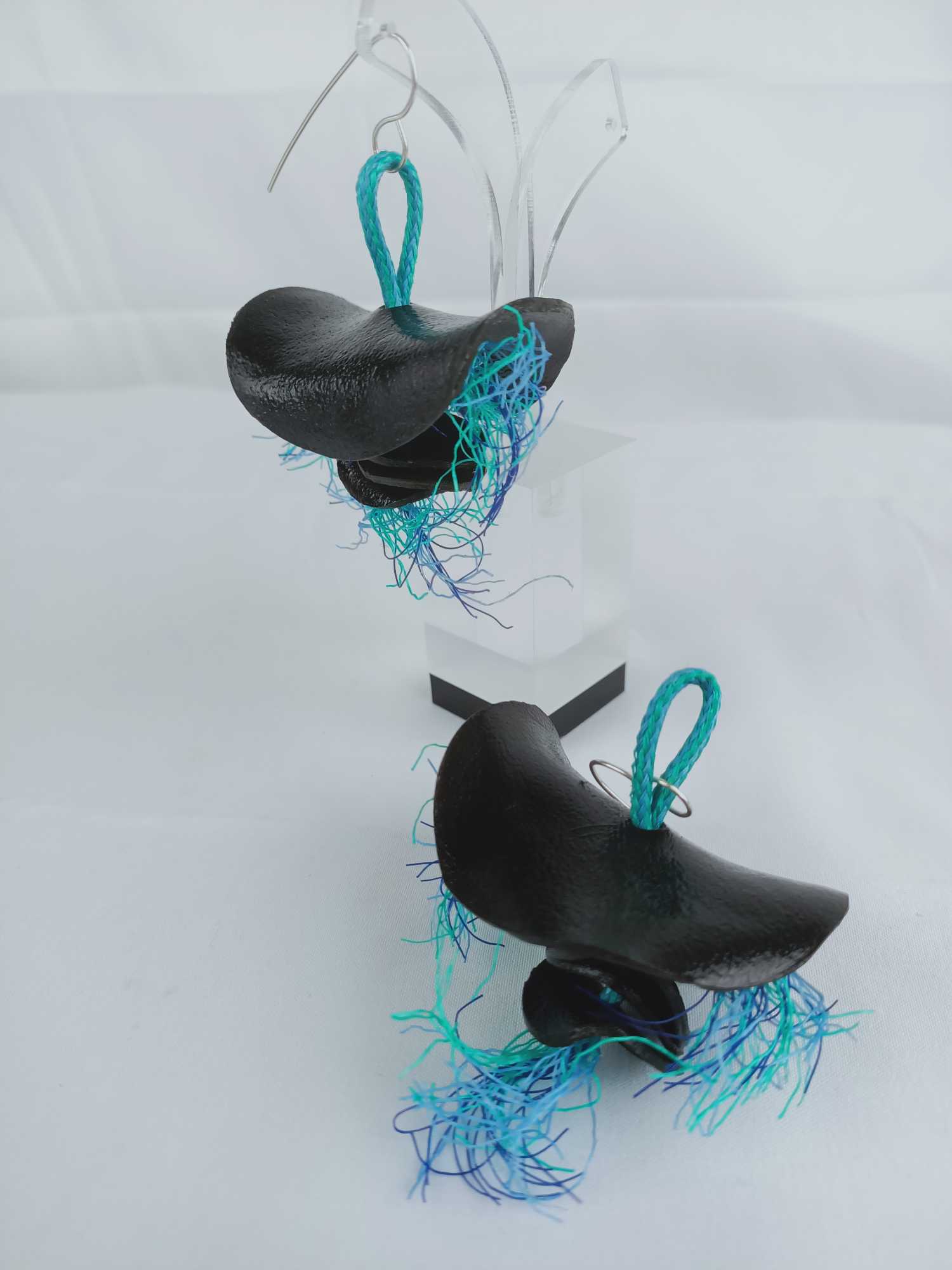
How do you gather, store and then work with the kelp?
I don’t use anyone else’s kelp, I like to gather it myself because that way I know what I’m getting, I know if it’s fresh or if it’s been out for a couple of days on the beach. And I look for interesting pieces, some that are perhaps scarred, some perhaps with holes in them. There are a lot of things to look out for, such as the thickness of the kelp, any scars that it has, and its grain. The grain looks like skin.
When the kelp dries, it becomes quite hard. The texture and the size of the kelp make a difference to how fragile it is. The big pieces, with long ribbons, can be quite thin. The type of kelp, the colour of it, and the texture of it will inspire the piece that I make.
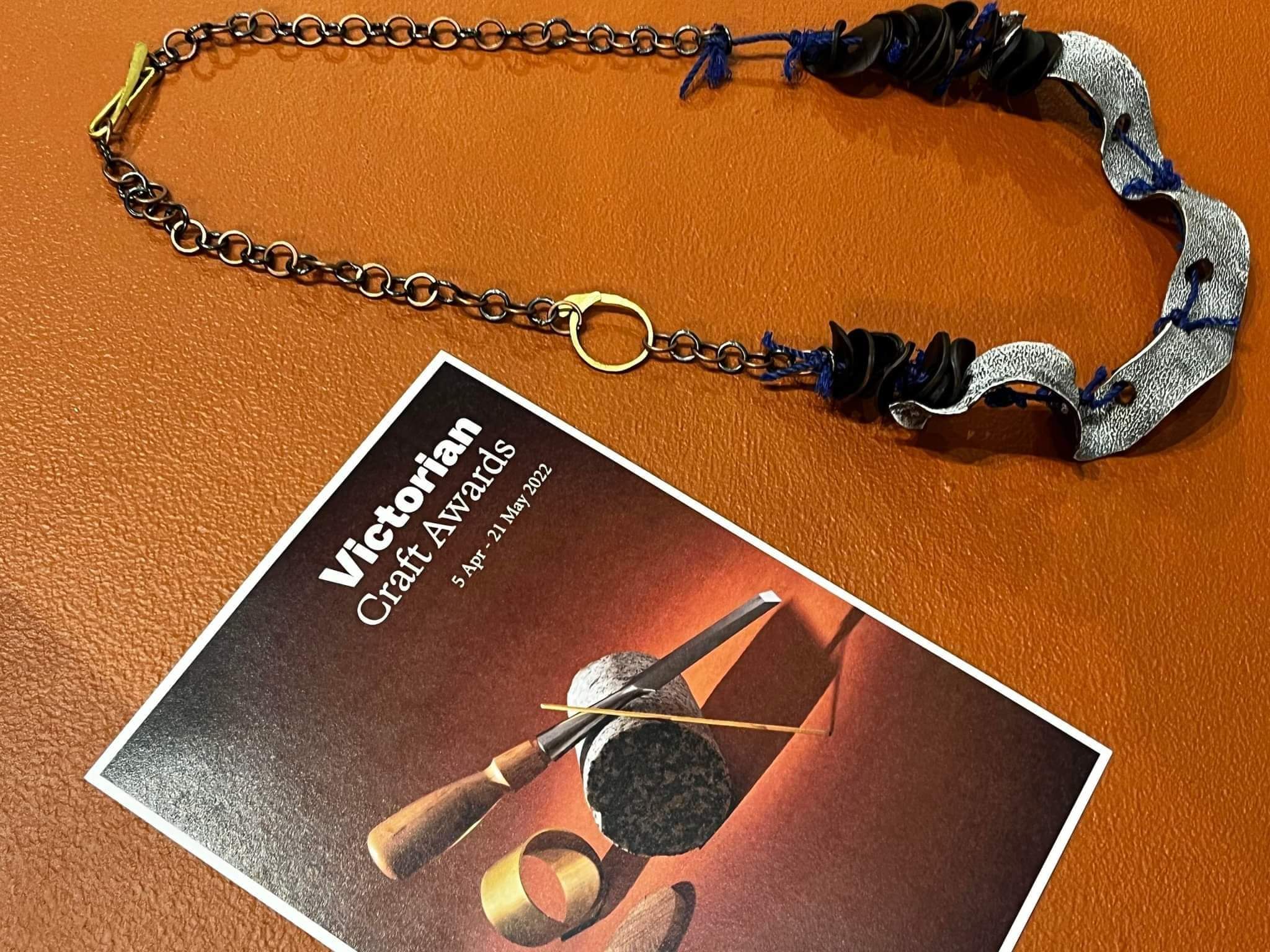
You won an award from Craft Victoria for one of your pieces. Can you please tell us what that was like?
It was exciting! I was entered into it and was chosen out of hundreds of people. We went along to the awards night and there were 50 odd people with their pieces, they were all on show and we had a look through all the entrants in this exhibition. And I said to my friend: “There’s no bloody way I could win amongst this, there’s so much talent here!” And then, as the very last award of the night was announced – the Encouragement Award – they said “Beverley Meldrum” and I think I swore, I was that surprised! We were sitting at the back and I had to walk through a huge sea of people up to the stage and make a speech. It was crazy, it was like the Logies! I had to walk through up there with everyone going “Oh congratulations, congratulations.”
What’s next for Beverley? Where would you like this creative journey to take you?
Well, in a couple of months I’ll be at the age of retirement and then I can just focus on my jewellery. I want to do some more training to learn about computers and developing my business – working with the kelp and making jewellery is my passion now and I really want to do that full-time.
Last year I did some work with the Koori Heritage Trust and RMIT, on a jewellery program, working in the silversmithing department. I’d like to do some more things like that.
So far, it’s just been an amazing ride. In the past year, recognition of my work has just blown up so that’s been really exciting. I never thought in my whole life that I’d be doing anything like this.
-----------------
You can follow Bev on Instagram @bevonline56
And you see her choosing the kelp in this YouTube video produced by the MPRG.
